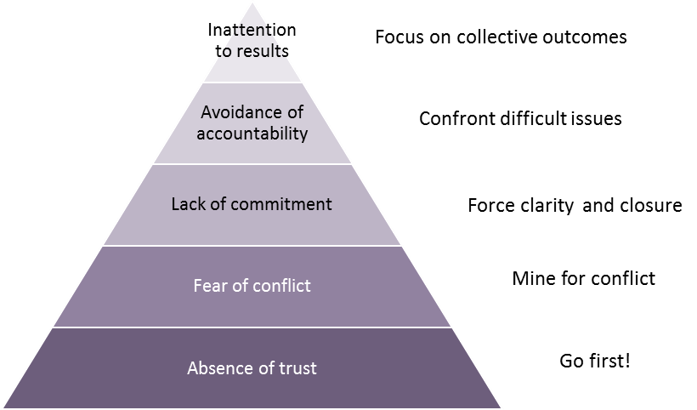An Absence of Trust (or Maybe Not)
On trust, micromanagement, and healthy work relationships.
For the longest time, I suffered from an internal conflict between a strong desire to confirm that what I’d put into motion was being done correctly, and stepping away entirely once I pressed play. I was concerned that I was leaning towards micromanaging, yet at the same time, unnecessary and avoidable things went wrong that I could have helped prevent if I hadn’t been so hands-off.
It bothered me that my inability to walk away might indicate a subconscious lack of trust in my people. If I couldn’t be confident in my ability to extend trust, I couldn’t be confident that I’d receive it. The absence of trust is such a fundamental problem that it’s the first dysfunction in Patrick Lencioni’s The Five Dysfunctions of a Team:
Lencioni P, 2012, The Five Dysfunctions of a Team, John Wiley and Sons
Without trust, there are no meaningful relationships. Not personally, and certainly not in the workplace. Merriam-Webster defines trust as:
trust (noun, first entry)
assured reliance on the character, ability, strength, or truth of someone or something
one in which confidence is placed
to rely on the truthfulness or accuracy of: believe
to place confidence in: rely on
to hope or expect confidently
trust (verb, first entry)
“Hope”, “rely on”, “expect”. Roll the die, fingers crossed. A position of trust is not a position of actionable power; there is no way to extend trust without the acceptance of risk and vulnerability. However, I couldn’t shake the nagging suspicion that I was washing my hands off of outcomes by not being involved, which irked me as I believe leadership and responsibility are inseparable. Round and round and round I went.
And then, thankfully, I read David Marquet’s Turn the Ship Around1 in which he talks about a breakthrough he had, struggling with the same issue:
“Trust means this: when you report that we should position the ship in a certain position, you believe we should position the ship as you indicated. Not trusting you would mean that I thought you might be saying one thing while actually believing something else. Trust is purely a characteristic of the human relationship. Now, whether the position you indicate is actually the best tactical position for Santa Fe is a totally different issue, one of physics, time, distance, and the movements of the enemy. These are characteristics of the physical world and have nothing to do with trust.”
It hit me that I’d confused a subconscious lack of trust in communication with a lack of trust in my people. I had to check in. I had to track progress because I had no confidence that I’d done a stellar job communicating my intent and expectations. If I didn't engage, I wasn't doing my job and I was setting people up for failure through no fault of their own.
Lead with trust. Build and nurture it through consistency of action and transparency. As long as you remain inquisitive without becoming interrogatory, and avoid being directive in your interactions, you are likely also steering clear of micromanagement and damaging trust.
It’s OK to check in.
Until next time.
Notes:
He also gave this excellent talk at CMX Summit West 2015


